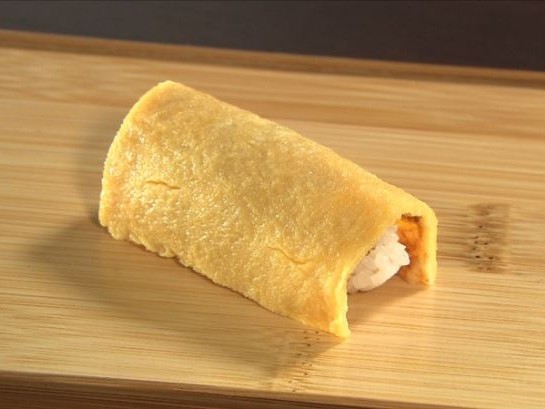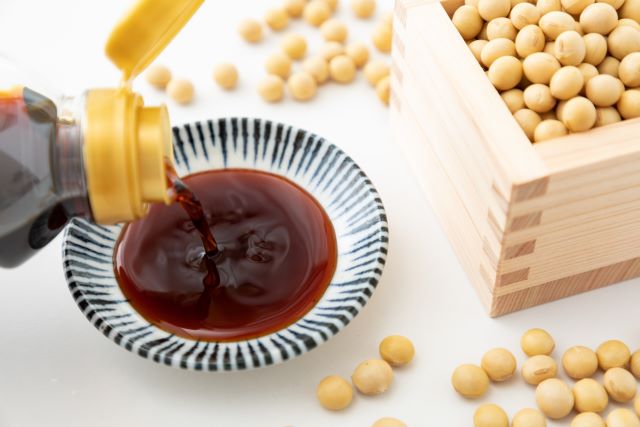
By the time you know some of the jargon used in sushi restaurants, you are already fully immersed in the world of sushi. The first jargon you will probably learn is Murasaki. Jargon is a word, phrase, or jargon that is understood only among certain professionals and their peers, so it is used among people who work at sushi restaurants. It is not used by customers, of course.
Now, what does Murasaki mean in a sushi restaurant? Actually, “Murasaki” is a jargon for soy sauce. So, we did some research to find out how soy sauce came to be called Murasaki. Originally, soy sauce was a food culture of the late Edo period, so there should be plenty of documentation of its use. However, even after researching, ” Murasaki ” ‘s origin was unclear. There are various theories, but here are some of them.
- There is a theory that soy sauce has the alias “Murasaki” because of soy sauce’s reddish-brown color.
In ancient and medieval times, the reddish-brown color was called “purple” in Japan, and the color of soy sauce dropped on a small plate was reddish-brown, which is why soy sauce was called “Murasaki” in Japan.
This may seem surprising since soy sauce appears to be black. Generally, dark soy sauce has a clear reddish-brown color. If you put it in a glass or something and look at it through the light in a bright place, you will see it has a beautiful reddish color.
- Some people believe that the alias “Murasaki” for soy sauce comes from purple being a noble color.
During the Edo period, although Edo became the political center of Japan, it still lagged behind Kyoto, Osaka, and other cities in the Kamigata region in terms of culture. The leaders of the Edo shogunate, who wanted to build a unique culture in Edo, apparently conceived the idea of making purple, which had long been considered a symbol of nobility, the symbolic color of Edo culture. It is said that the 8th shogun, Yoshimune, had purple dye studied in the Edo Castle.
It is also known as Edo purple (Edomurasaki), the color of the headband that the main character wears in popular Kabuki performances. There is no reason why the Edomurasaki color used by actors in Kabuki, the greatest entertainment of the Edo period, should not be popular. Edomurasaki is also known as the color that symbolizes the aesthetic sense of the chic Edokko, characterized by its deep blue tone in contrast to the reddish Kyoto purple (Kyomurasaki).
In this way, purple culture grew up in Edo. It is widely believed that this cultural background and the fact that dark soy sauce, which was an expensive and precious seasoning at the time, was almost purple, gave rise to the alias Murasaki. As a synonym for “precious,” dark soy sauce in the Kanto region came to be called Murasaki.
- Some people believe that Murasaki, another name for soy sauce, comes from the black soybeans of Tamba.
Tanba no kuromame are large, high-grade soybeans originating from the Tanba region of Hyogo Prefecture. It is said that the name “Murasaki” was derived from the purple color of soy sauce made from these black beans.
- There is a theory that the name “Shihou” (It means purple mountain) is derived from the elegant name for Mount Tsukuba.
Shihou is said to have originated from the purple color of the surface of the mountain when illuminated by the setting sun. It is also speculated that purple was an appropriate color for Mt. Tsukuba, which has also been revered as a sacred mountain. The theory is that soy sauce was produced in large quantities near the foot of Mt. Tsukuba during the Edo period, giving soy sauce the alias “Murasaki”. Shihou (紫峰) is also used today in the Shibanuma shoyu brand located at the foot of Mt. Tsukuba.
Finally, it is said that soy sauce came to be called Murasaki actually after the Meiji period (1868-1912). If this is correct, the second theory seems to be wrong. Many soy sauce manufacturers have been around since the Edo period, but their websites do not mention the origin of Murasaki at all. It is Jargon after all, so it is not for outsiders to make claims. In addition to Murasaki, one should avoid using Agari (which means three things in Japanese: Green tea in a sushi restaurant, dead fish, and a finished dish), Oaiso (Check), Namida (Wasabi), and Aniki (sushi material that has been prepped first, i.e., old).
Related contents:
Types of Shoyu (Soy sauce)
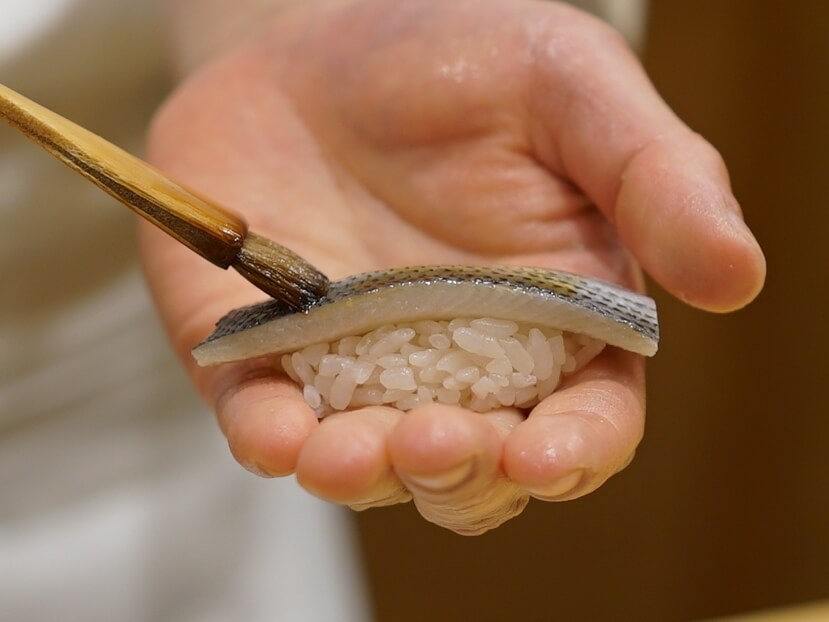 At high-class restaurants, the minimum required nikiri soy sauce is brushed on to the piece, but at restaurants frequented by the general public, customers dip their sushi in as much sauce (soy sauce that includes chemical seasonings) as they like. In fact, there is a gimmick here. The high-class restaurant provides an opportunity for their customers to eat sushi toppings in the most delicious state possible, but the restaurants for the general population allow customers to eat casually with sauce, a daily necessity. This changes how topping ingredients are selected. If the sushi is going to be dunked into the soy sauce, then the topping must have an appropriate fat content that won’t be overpowered by the soy sauce. Therefore, instead of a coastal tuna, a farm-fattened tuna with oily fat is preferred. It is often said that farm-fattened products are too rich, but it is also said that they have an impact that isn’t overpowered by the sauce they are enjoyed with.
At high-class restaurants, the minimum required nikiri soy sauce is brushed on to the piece, but at restaurants frequented by the general public, customers dip their sushi in as much sauce (soy sauce that includes chemical seasonings) as they like. In fact, there is a gimmick here. The high-class restaurant provides an opportunity for their customers to eat sushi toppings in the most delicious state possible, but the restaurants for the general population allow customers to eat casually with sauce, a daily necessity. This changes how topping ingredients are selected. If the sushi is going to be dunked into the soy sauce, then the topping must have an appropriate fat content that won’t be overpowered by the soy sauce. Therefore, instead of a coastal tuna, a farm-fattened tuna with oily fat is preferred. It is often said that farm-fattened products are too rich, but it is also said that they have an impact that isn’t overpowered by the sauce they are enjoyed with.
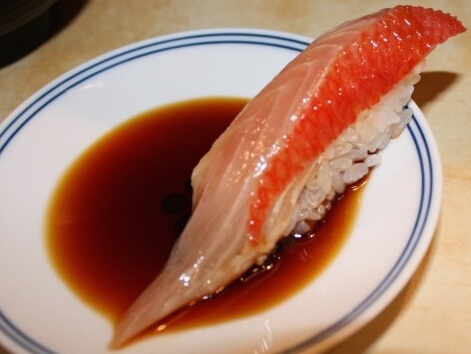 There is a sensor on the tongue that feels the degree of saltiness. This prevents us from eating too much of things that are extremely salty. Chemical seasonings confuse that sensor. The chemical seasoning palliates the degree of saltiness felt by the tongue. Even if you were to, for example, dunk your sushi into the soy sauce and chemical seasoning mixture, it won’t feel salty. If you eat sushi with the sauce, you can take in a high volume of sodium, which is a pleasure trigger for the human body, without feeling the saltiness on your tongue. In other words, it may be more accurate to say that with commoner sushi, you actually drink the sauce, not dip into it.
There is a sensor on the tongue that feels the degree of saltiness. This prevents us from eating too much of things that are extremely salty. Chemical seasonings confuse that sensor. The chemical seasoning palliates the degree of saltiness felt by the tongue. Even if you were to, for example, dunk your sushi into the soy sauce and chemical seasoning mixture, it won’t feel salty. If you eat sushi with the sauce, you can take in a high volume of sodium, which is a pleasure trigger for the human body, without feeling the saltiness on your tongue. In other words, it may be more accurate to say that with commoner sushi, you actually drink the sauce, not dip into it.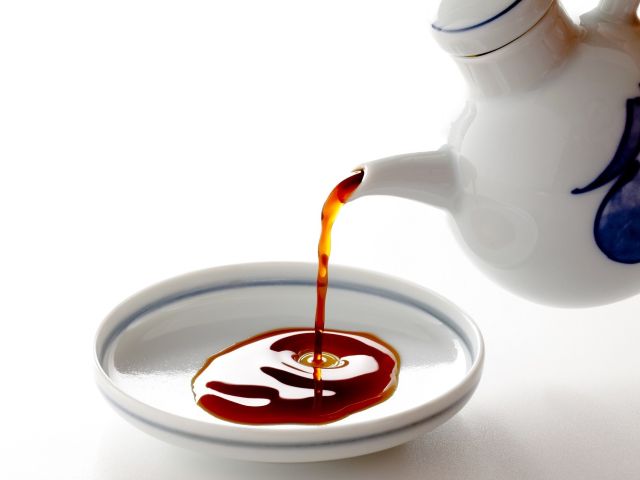
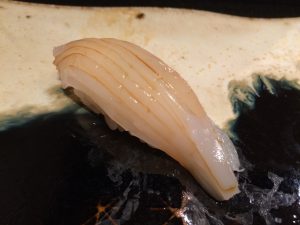 First of all, lightly applying just a small amount of Nikiri shoyu (sushi sauce) on the sushi topping brings out its natural umami flavor and also creates an attractive glossy glaze. Scientifically, this technique leverages the odor-masking properties of soy sauce, which contains sulfur-containing compounds such as methanethiol (methyl mercaptan). These compounds chemically interact with and neutralize unpleasant raw fish odors, effectively masking the “fishy” smell and enhancing the overall sensory experience.
First of all, lightly applying just a small amount of Nikiri shoyu (sushi sauce) on the sushi topping brings out its natural umami flavor and also creates an attractive glossy glaze. Scientifically, this technique leverages the odor-masking properties of soy sauce, which contains sulfur-containing compounds such as methanethiol (methyl mercaptan). These compounds chemically interact with and neutralize unpleasant raw fish odors, effectively masking the “fishy” smell and enhancing the overall sensory experience.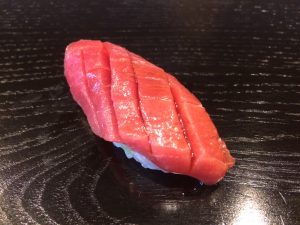 Historically, zuke (soaking fish in nikiri soy sauce) was not limited to tuna but applied to other types of fish as well. This traditional method takes advantage of the bacteriostatic effects of soy sauce—its high salt concentration and presence of antimicrobial peptides inhibit the growth of harmful bacteria like
Historically, zuke (soaking fish in nikiri soy sauce) was not limited to tuna but applied to other types of fish as well. This traditional method takes advantage of the bacteriostatic effects of soy sauce—its high salt concentration and presence of antimicrobial peptides inhibit the growth of harmful bacteria like 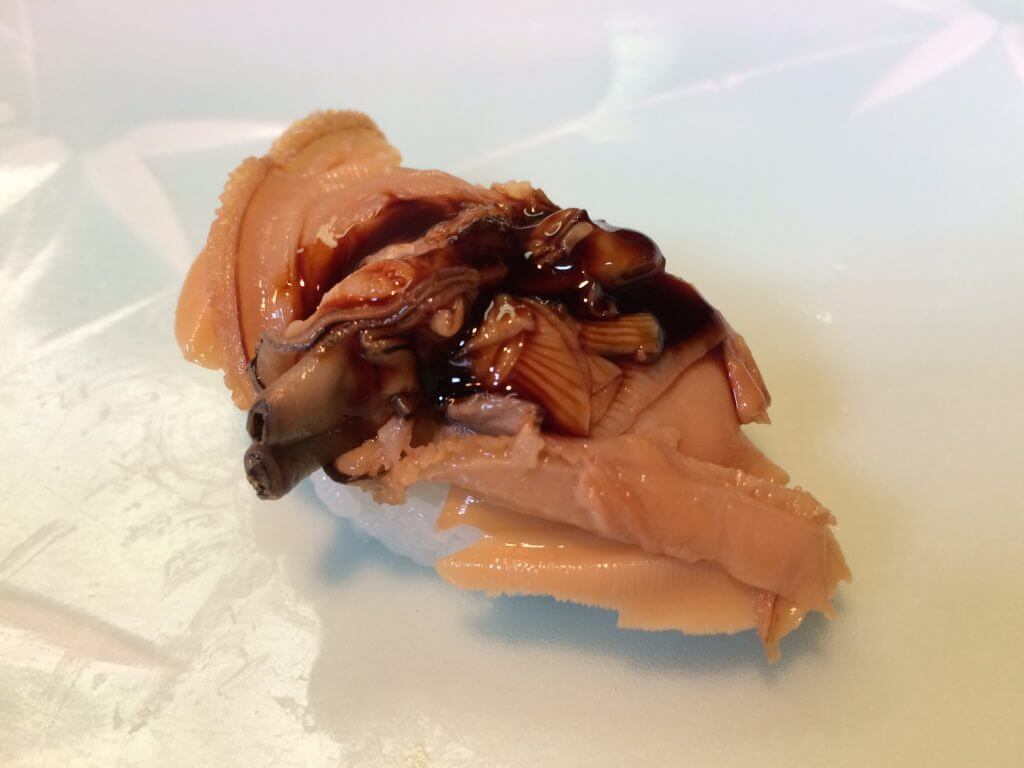 Tsume, a thickened sushi sauce made by boiling down soy sauce with simmered conger eel sauce, mirin and sugar, demonstrates the thermal chemical reactions involved in soy sauce cooking. The Maillard reaction between amino acids from the soy sauce and reducing sugars creates a rich brown glaze and complex aroma that stimulates appetite. This reaction also contributes to the development of subtle caramelized flavors, enhancing the sauce’s depth.
Tsume, a thickened sushi sauce made by boiling down soy sauce with simmered conger eel sauce, mirin and sugar, demonstrates the thermal chemical reactions involved in soy sauce cooking. The Maillard reaction between amino acids from the soy sauce and reducing sugars creates a rich brown glaze and complex aroma that stimulates appetite. This reaction also contributes to the development of subtle caramelized flavors, enhancing the sauce’s depth.